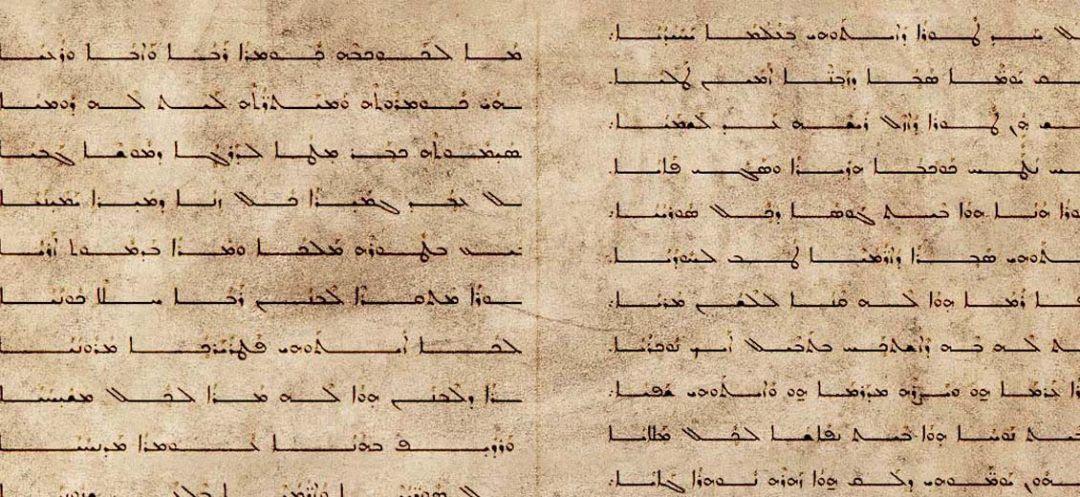
Maronite literary production in the Syriac language continued well into the 20th century with poets celebrating Lebanon and its great figures. This literature preserved the heritage of the past, conveying a sense of national identity through the culture and musicality of the language.
In the realm of secular Maronite literature in the Syriac language, the 17th and 18th centuries bequeathed us notable authors such as Joseph Dahdah, Joseph of Ban, Patriarch Joseph Estephan, and his namesake bishop (all introduced in the previous article). Their works were collected by the young scholar Joseph Bou Charaa, who embarked on a quest to uncover old manuscripts to reveal a treasure trove of Syriac Maronite literature that extended into the heart of the 20th century. Only a political decision, aligned with the ideology of Arabization initiated in 1943 by President Bechara el-Khoury, could bring an end to this living heritage, which breathed its last in the 1960s.
Matthieu Chehwén 1879
The 19th century abounded with literary works, covering sacred and profane themes. Among these, Mattaï Chehwén stands out for his original Syriac fables inspired by La Fontaine. His works are kept in the libraries of the Saint Anthony Monastery in Rome and the Notre-Dame University in Louaizé. In his fable The Fox, the Wolf, and the Mule, he wrote:
One day, the fox and the wolf met by chance
And vowed to go hunting together
They roamed the fields, crossed mountains near and far,
Yet found nothing to satisfy their hunger...
This style is utterly different from medieval or liturgical Syriac texts. Mattaï developed a simple, enjoyable, and modern writing style, accessible to the general public and well-suited for teaching children in schools.
Equally mindful of the importance of history and the transmission of cultural heritage, he honored Father Agostinos Chbébé for republishing the poems of the medieval Syriac author Gregorios Bar Hebraeus. To this end, Mattaï crafted his verses with the "os" rhyme, characteristic of Hellenized Syriac and highly esteemed by the Maronites:
A difficult task has fallen upon you,
O Father Agostinos
When you gathered the poems,
Of Maphrian Gregorios
Known as Bar Hebraeus,
He truly deserves the Qoulos (praise).
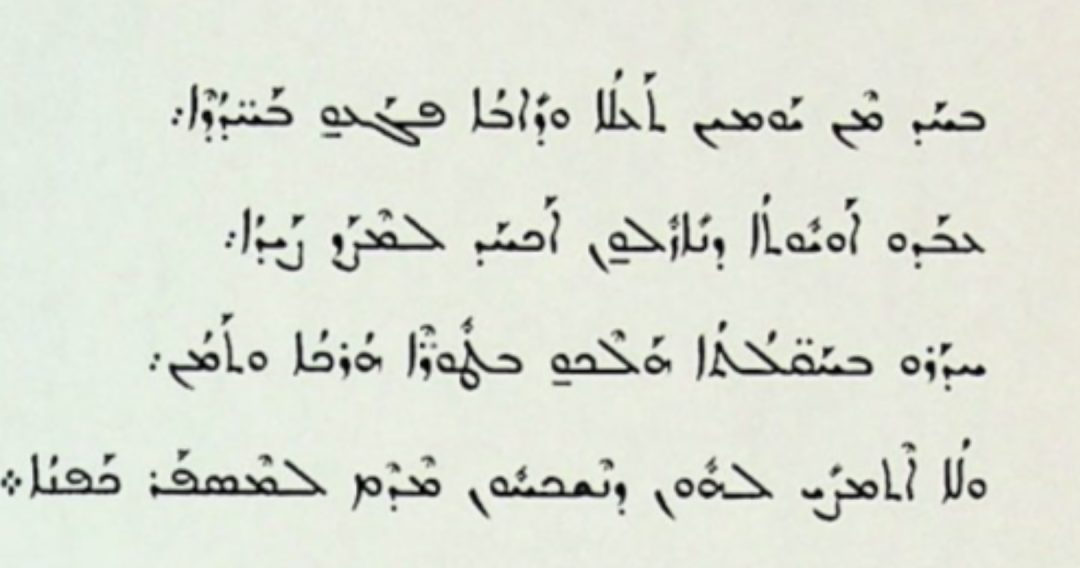 Matthieu Chehwén, 1879: « The Fox, the Wolf, and the Mule ». (Transcription Joseph Bou Charaa)
Matthieu Chehwén, 1879: « The Fox, the Wolf, and the Mule ». (Transcription Joseph Bou Charaa)Paul Khoury Kpharnissé 1888-1963
Together with Bishop Gabriel Qordahi (1845-1931), Father Paolos (or Boulos) Mbarak Khoury Kpharnissé is one of the two greatest Maronite contributors to the study of the Syriac language. These two scholars authored the two Maronite Syriac dictionaries, to which was later added the dictionary by the Lebanese Jesuit Louis Costaz, published in Beirut in 1963. The distinctive feature of these Lebanese dictionaries compared to those from Syria-Mesopotamia is their straightforward approach to words of Greek etymology.
Furthermore, Paolos Kpharnissé was the maternal uncle of Father Yohanna-Yéchoua Khoury, who dedicated 70 years of his life to teaching Syriac, from the age of 15 until his death in 2020. Yohanna-Yéshoua was a Syriac professor at the Maronite Patriarchal Seminary and the Lebanese University, where he also oversaw Hebrew language studies. He authored a series of books on Syriac language teaching, grammar, and conjugation.
Paolos Kpharnissé wrote several texts and poems in the Syriac language, including one from 1927 dedicated to Professor Yaoseph Hanna Mansour in celebration of Saint Joseph's Day. He wrote the following:
On your day, filled with beauty, O Yaoseph (Joseph) the teacher,
In joy and splendor, we all join in celebration.
Children, brothers, come, rejoice, exult, and jubilate,
And for all my words, applaud and sing along.
However, his greatest poem is the one he dedicated to Patriarch Elias Hoayek upon his return from Versailles, where he had attended the League of Nations summit in 1919:
If you pass by Qannoubine and Bkerke,
Bow your head, for the great man is there:
Mor Elio Pétros kawkbo Antioki (Mar Elias Peter star of Antioch).
Behold, Tur Lévnon (Mount Lebanon) and all the Orient shine through him.
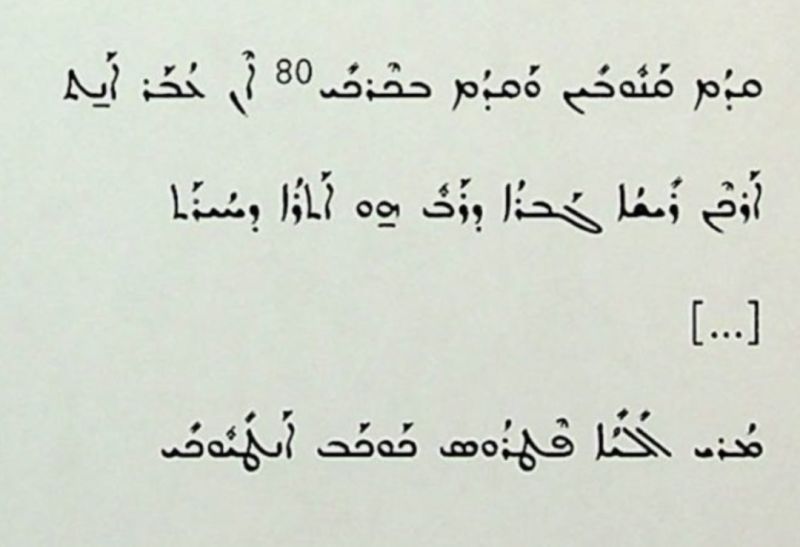 Paul Kpharnissé, 1919: “Eulogy of Patriarch Elias Hoayek”. (Transcription by Joseph Bou Charaa)
Paul Kpharnissé, 1919: “Eulogy of Patriarch Elias Hoayek”. (Transcription by Joseph Bou Charaa)Joseph Hobeika 1888-1944
Yaoseph Hobeika (from Baskinta) is a monk of the Lebanese Order, who authored a dictionary for students titled Piré bachilé (ripe fruits). He wrote several commendatory poems, including two dedicated to Pope Leo XIII in 1903 and Pope Pius X in 1904.
Yaoseph notably wrote a poem in 1935 for the Saint-Maron Seminary School in Ghazir. He celebrated this institution as “d qomat bé Gazir” (located in Ghazir) and highlighted its inauguration “bé lévo de Lévnon” (in the heart of Lebanon). Yaoseph's poems were published by his brother Boutros in his anthology of Syriac poetry in 1952.
One of his most famous poems is a tribute to Patriarch Elias Hoayek, in which he wrote:
The glory of Lebanon has been bestowed upon you, great lord,
For your eminent deeds, O pure heart
You who have filled our high mountain with such goodness...
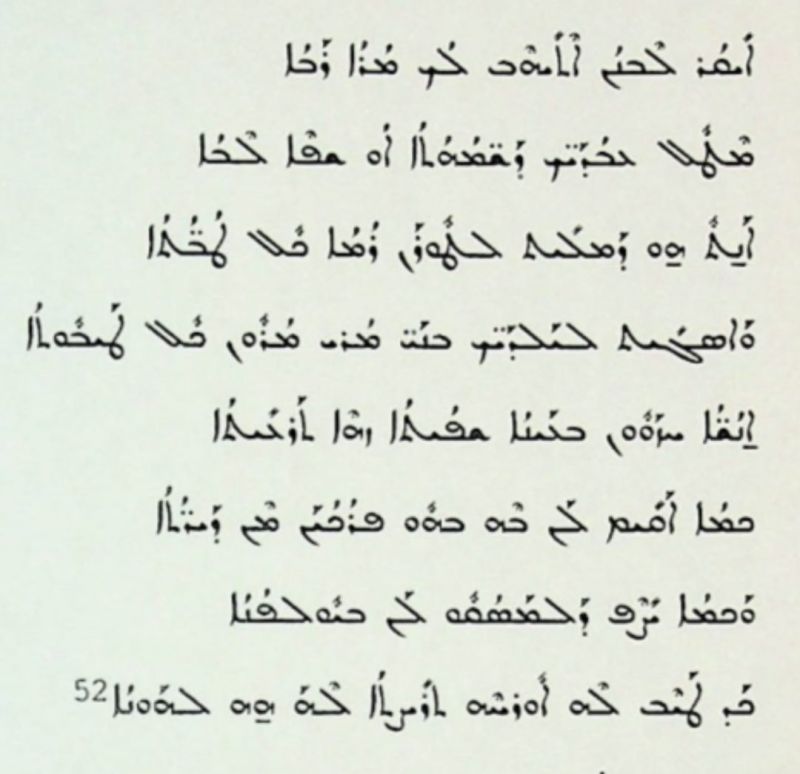 Joseph Hobeika, circa 1920: “Eulogy of Patriarch Elias Hoayek”. (Transcription by Joseph Bou Charaa)
Joseph Hobeika, circa 1920: “Eulogy of Patriarch Elias Hoayek”. (Transcription by Joseph Bou Charaa)Paolos Beit-Daroyo 1950
Despite not being Maronite, the Lebanese Chaldean poet, Paolos Beit Darayo, also known as Bidari, has greatly contributed to this anthology with his hymn dedicated to Lebanon known as Mimré mgavayo ‘al Tur Lévnon (Selection of Poems on Mount Lebanon).
One of the poems in this anthology is titled Levnon w moréh (Lebanon and its lord). It dates back to the 1950s and evokes the romanticized image of Lebanon in the consciousness of Christians in the Orient during the 20th century. The Chaldean author praised Lebanon and its lord, proclaiming:
A mountain like no other,
Ancient, old, yet endlessly young.
The summit of this mountain points its head to the sky
Radiant and glowing, like a magnificent star, overflowing with beauty.
This mountain, a shelter for all Syriacs.
A mountain called "magnificent Lebanon," such a delightful name,
And its king, none other than the Maronite patriarch,
The lord of Lebanon has become the lord of every Christian
Weary and persecuted in the House of the Orient (…)
They all turn their gaze towards this Lebanese shelter.
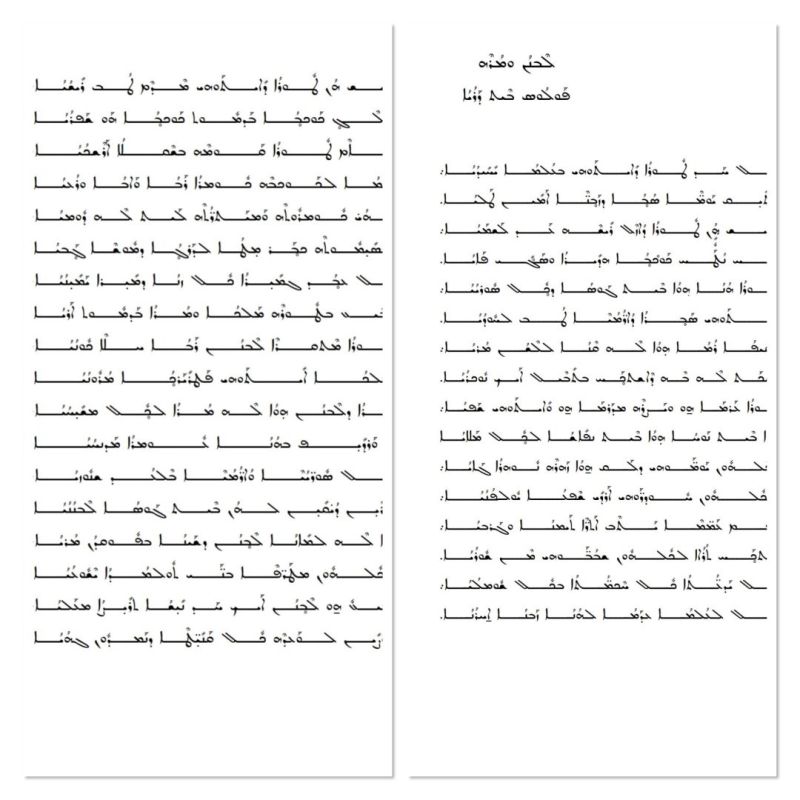 Paolos Beit-Daroyo, circa 1950: “Lebanon and its Lord”. (Transcription by Joseph Bou Charaa)
Paolos Beit-Daroyo, circa 1950: “Lebanon and its Lord”. (Transcription by Joseph Bou Charaa)
Read more



Comments